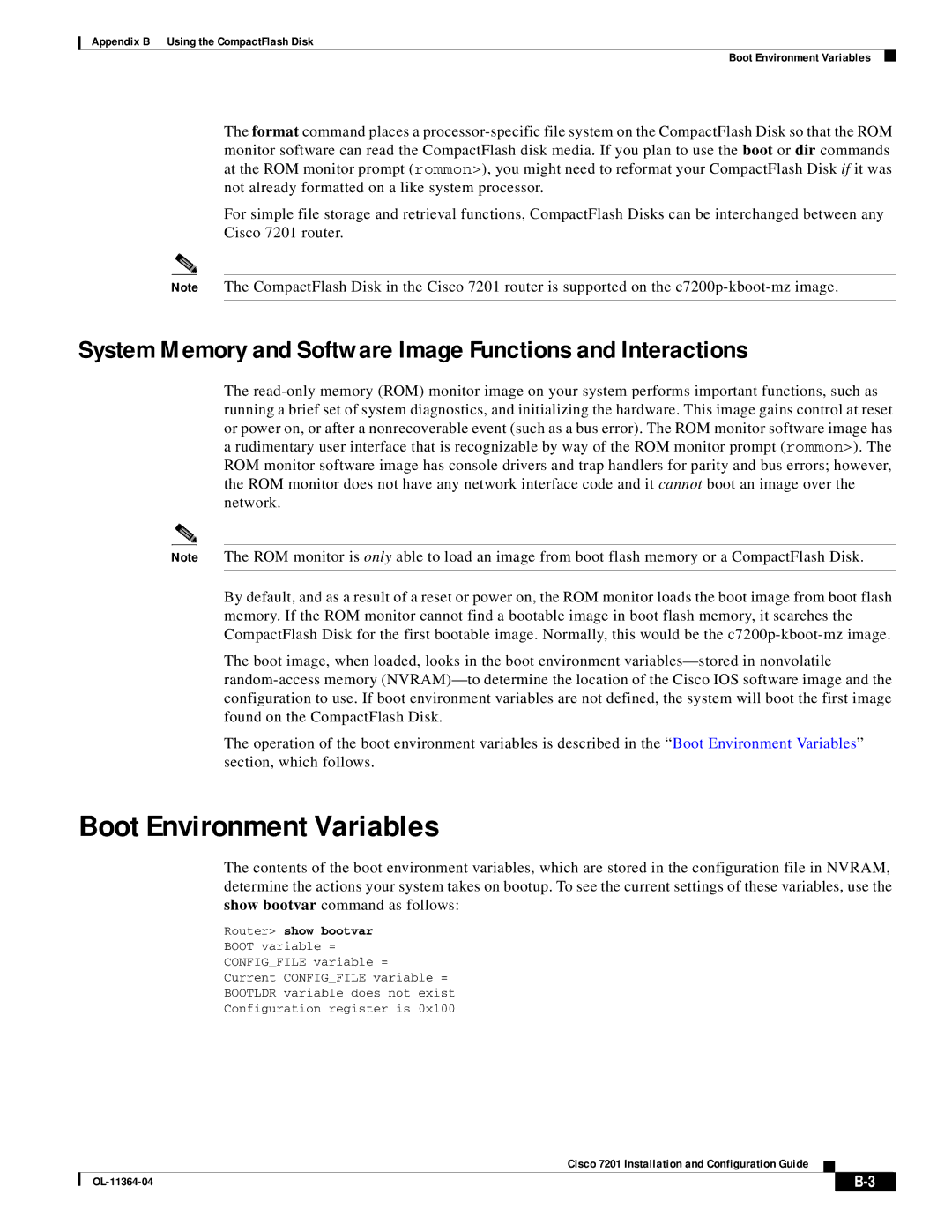
Appendix B Using the CompactFlash Disk
Boot Environment Variables
The format command places a
For simple file storage and retrieval functions, CompactFlash Disks can be interchanged between any Cisco 7201 router.
Note The CompactFlash Disk in the Cisco 7201 router is supported on the
System Memory and Software Image Functions and Interactions
The
Note The ROM monitor is only able to load an image from boot flash memory or a CompactFlash Disk.
By default, and as a result of a reset or power on, the ROM monitor loads the boot image from boot flash memory. If the ROM monitor cannot find a bootable image in boot flash memory, it searches the CompactFlash Disk for the first bootable image. Normally, this would be the
The boot image, when loaded, looks in the boot environment
The operation of the boot environment variables is described in the “Boot Environment Variables” section, which follows.
Boot Environment Variables
The contents of the boot environment variables, which are stored in the configuration file in NVRAM, determine the actions your system takes on bootup. To see the current settings of these variables, use the show bootvar command as follows:
Router> show bootvar
BOOT variable =
CONFIG_FILE variable =
Current CONFIG_FILE variable =
BOOTLDR variable does not exist
Configuration register is 0x100
Cisco 7201 Installation and Configuration Guide
| ||
|
